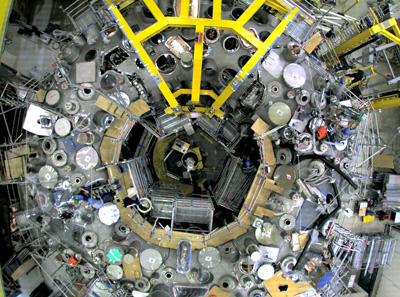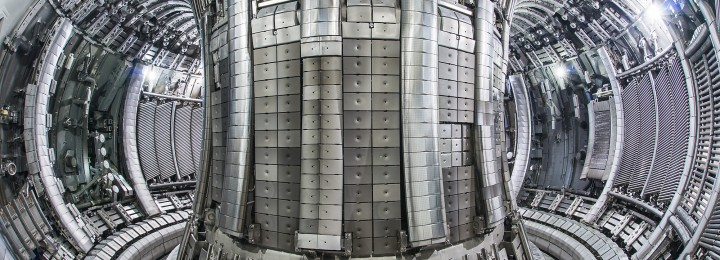The European fusion research programme has always been characterized by the strong cooperation between research institutions and its focus on priority topics. Since 1999, the current biggest fusion device JET in Culham (UK) has been managed collaboratively by the European fusion laboratories. The fusion research programme's focus on the construction and operation of ITER has been established within the framework of the European Fusion Development Agreement (EFDA). The work programme of the EUROfusion consortium is based on the missions of the "Roadmap to the Realisation of Fusion Energy", which was published in 2012 by EFDA and updated in 2018.
Fusion research at Austrian universities and research institutions is being conducted in cooperation with renowned European fusion laboratories and partners at European universities:
Max Planck Institute for Plasma Physics
In Garching near Munich, operation of the biggest German fusion device of the Tokamak type ASDEX Upgrade started in 1991. ASDEX Upgrade is intended to investigate the core issues of fusion research under power-plant like conditions and to elaborate the physical fundamentals for ITER and DEMO. For this purpose particular plasma characteristics such as plasma density, plasma pressure and material properties of the first wall are adapted to the circumstances in a future fusion power plant.

Wendelstein 7-X is the world's largest fusion device of the stellarator type. It is a ring-shaped device comprising five almost structurally identical modules: Each of the five sections of the plasma vessel, along which 14 magnet coils are strung, is enclosed by a steel outer sheath, weighing altogether 120 tons. Assembled like slices of cake on the machine's foundation, the five modules form a steel ring from which numerous connection ports protrude – inlets for diagnostic systems, heating facilities and pumps.
The first plasma was achieved in December 2015 and the facility was officially inaugurated on 3rd February 2016 in the presence of the German chancellor Angela Merkel.
Culham Centre for Fusion Energy
JET (Joint European Torus) is the world's current largest magnetic fusion device. It is the only experiment capable of using tritium and special wall materials. Since 1999 it has been operated in cooperation between the EFDA partners. With its recent upgrade with the installation of the ITER-like wall it has become an ideal ITER test ground. In 2021, the record from 1997 was broken by producing stable plasmas with an energy output of 59 MJ.
Recognizing this capability, the possibility of continuing the operation of JET in a wider, world-wide cooperation is being pursued. The experimental program of JET is being coordinated by EUROfusion. Currently more than 350 researchers and engineers from more than 40 European research institutions work on experiments and modeling, which provide essential results for the prospective operation of ITER.
International fusion activities: the IAEA’s role
Worldwide research has made impressive progress in fusion and plasma physics. Many scientific questions have been solved in the last years. Controlled nuclear fusion and plasma physics research is currently carried out in more than 50 IAEA Member States. The challenge is to prove that fusion as an energy source is scientifically feasible. Since this will require large, complex and expensive devices to address reactor-relevant physics and technology challenges, international collaboration on fusion research and development is needed.
The IAEA (International Atomic Energy Agency) fosters international collaboration and coordination to help close the existing gaps in physics, technology and regulation and move forward in developing the peaceful use of fusion energy. The Agency’s activities in this field cover, among others, plasma physics and fusion power, technologies and material, both for magnetic and inertial fusion.
Click HERE for more information from the IAEA regarding fusion research.
Further cooperations
- Jülich Research Center (Germany): Plasma-Wall Interaction
- Technical University of Denmark (Lyngby near Copenhagen): Plasma Physics and Fusion Energy
- Consorzio RFX (Padua, Italy)
- Jožef Stefan Institute (Ljubljana, Slovenia): Plasma turbulence, ELMs, probe diagnostics
- Comenius University (Bratislava, Slovakia): Plasma-Wall Interaction, ionization cross-section

